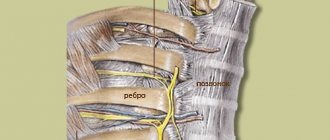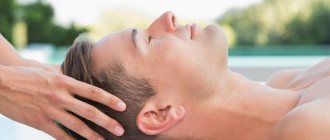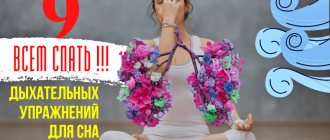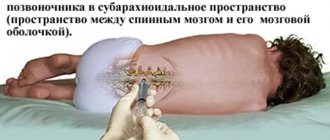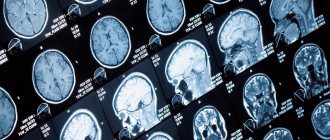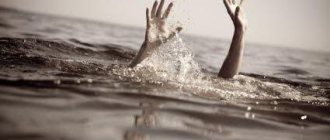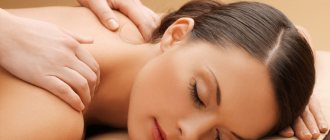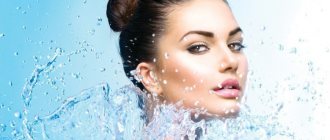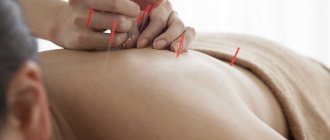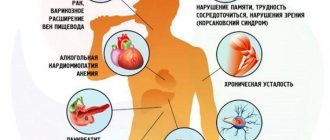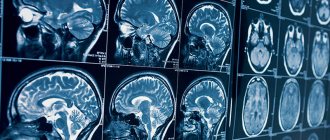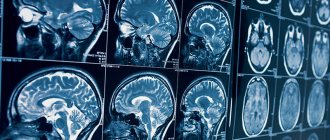Cerebral palsy (cerebral palsy) is a collective concept that generally combines under its name a list of forms and manifestations of central nervous system lesions that are similar in their etiology and symptoms. Most forms are characterized by muscle spasticity, although there are forms in which there is no spasticity, but there are cerebellar symptoms. The name of the forms is associated with the localization of spasticity and the depth of damage to the central nervous system from paresis, partial loss of innervation, to paralysis or plegia, complete loss of muscle function. In the first place, the cause of this disease is birth trauma, which can result in rupture of brain vessels or prolonged hypoxia due to blockage, compression of blood vessels; lack of oxygen for a long time is very dangerous for the brain. Also common causes: herpes, genetic disorders, cytomegalovirus, intoxication, past diseases of the pregnant woman.
The role of massage in the treatment of cerebral palsy in children.
Massage for children with cerebral palsy is always prescribed, but in the treatment process it still plays one of the main roles, not the main one. What is most important in the treatment of cerebral palsy cannot be said unequivocally, I would highlight the most important: drug treatment, exercise therapy (in all its diversity), massage, and in the late recovery period, orthopedic devices such as corsets, splints, verticalizers. The role of massage is great in conjunction with the above effective methods of treatment, and small when used alone. You have to act without massage if it turns out to be contraindicated, this happens when epilepsy or convulsions accompany the main diagnosis.
Goals and objectives of massage for cerebral palsy in children.
The goals of massage in the treatment of cerebral palsy in children are to reduce spasticity; prevention of the formation of contractures, prevention of stagnation of metabolic processes, extinguishing pathological reflexes, normalizing the functioning of the nervous system, as far as possible. To achieve such goals, it is necessary to solve problems to improve the mobility (elasticity) of tendons, relaxation of muscles and ligaments.
Goals such as a cure for a disease are difficult to achieve; in most cases, it is not possible to completely cure a child. Goals must be realistic, often they are long-term, so I recommend that parents save their nerves, strength and resources for long-term rehabilitation of the child. Don’t be fooled by promises to “get your child back on his feet,” those who work with such diagnoses understand perfectly well that miracles don’t happen, and someone takes advantage of the parents’ feelings and makes money from it. Achieving results in rehabilitation always requires a lot of work by specialists, the child and parents.
Indications and contraindications for the procedure
Direct indications for massage in children and adults diagnosed with cerebral palsy are:
- increased muscle tone;
- decreased muscle growth;
- impaired blood circulation and outflow of lymphoid fluid;
- poor general health;
- problems with posture (development of kyphosis, lordosis and other diseases of the spinal column);
- development of muscular torticollis;
- violation of the skeletal system (presence of flat feet, club feet, etc.);
- hip dysplasia.
Like any other medical procedure, massage has its contraindications. Contraindications to the classical procedure include:
- acute allergies;
- fungal skin disease;
- impaired integrity of the epidermis;
- development of acute respiratory disease.
Acupressure is not performed when:
- concomitant development of an infectious disease;
- presence of acute heart failure;
- impaired integrity of the skin.
Hardware massage is not performed for any skin or infectious diseases, inflammatory processes in organs or lymph nodes, or for advanced varicose veins.
It is important to do massage with exercise therapy for cerebral palsy.
The most important condition for achieving positive results in the treatment of cerebral palsy in children is the addition of exercise therapy massage with physical therapy. Moreover, it is advisable to carry out massage with exercise therapy in one procedure. Why?
1. This is due to the fact that muscles, ligaments and tendons need to be prepared for physical therapy, i.e. warm up and knead.
2. No massage can replace movement. Even passive exercises performed by a massage therapist will have irreplaceable benefits on the child’s body. And if it is possible to achieve the appearance of active movements controlled by the child, this is a big victory. Massage with exercise therapy for cerebral palsy in children can be carried out sequentially, i.e. first a general massage, then exercises or perhaps stirring.
3. The benefits of therapeutic gymnastics are also in teaching a child active, controlled movements that fill our lives, but we do not think about them, but simply use them. When the parts of the brain that provide smoothness, continuity, accuracy, strength and, in general, the ability to move limbs and other parts of the body are disabled, then through gymnastics we try to stimulate the brain to create neural pathways bypassing the affected areas, sometimes this is successful.
Where to start massage for a child with cerebral palsy?
It is classically correct to start a massage from the back, but there are deviations from the rules. This usually depends on the tolerability of the procedure, or the individual characteristics of the child’s condition or behavior. We start with a back massage, because this is how we first treat the places where the spinal nerves exit the spinal canal, which then branch out into the muscles and other tissues. Those. This is a preliminary reflex effect on the muscles without touching them with your hands, and then the limbs are massaged. The sequence and principles of massage of the arms and legs for cerebral palsy depend on the form of the disease and the condition of the soft tissues of the extremities. If the child is small, then his strength limit for the procedure is less, or he may be very capricious, especially in the tummy position. In such cases, you have to do a massage according to an individual scheme for the child. It happens that we start a massage with problem areas right away; it is important to treat the most necessary areas, because... the child may begin to be capricious 20-30 minutes after the start of the procedure and things simply will not reach the right places.
Exercise therapy
Soon after diagnosis, but only when intracranial pressure has reached normal levels and there are no seizures, a course of physical therapy should be started. Without this, treatment for cerebral palsy will be ineffective. Rehabilitation doctors and neurologists select a cycle of exercises that will:
- prevent weakening of muscles that do not work due to illness;
- prevent damage to non-working muscles;
- reduce muscle tension to prevent contracture (fixation in an abnormal position).
Training should be carried out daily, the load increases gradually, under the supervision of a rehabilitation specialist. A set of exercises is selected by a doctor and consists of:
- treatment by position, with limb fixation in splints, splints, using sandbags;
- muscle stretching: swinging the limb in each joint, with a gradual increase in amplitude;
- muscle relaxation training: holding arms and legs (alternately) until involuntary movements decrease or hypertonicity weakens;
- walking;
- exercises involving agonist and antagonist muscles: rotation, flexion-extension in all joints, in parallel with muscle massage;
- lifting with the help of an instructor on an inclined plane to not only train the muscles of the legs and abs, but also develop balance;
- endurance exercises.
For spastic diplegia, exercises with continuous movement are used; in the astatic form, exercises should be short-term, with breaks between them. In the atonic form, special attention is paid to exercises to maintain balance.
The video shows exercises for developing joints:
The greatest effect from exercise can be obtained if you combine it with massage.
Therapeutic foot massage for children with cerebral palsy.
Two legs of an adult with aching joints
Almost all forms of cerebral palsy affect the limbs. Most often you have to work with muscle spasticity. The legs are the most difficult area due to the massiveness of the muscles. Despite the fact that the child may be small, the leg muscles are already so strong that you have to make a lot of effort and spend a lot of time on them to achieve any lasting relaxation. Leg massage for cerebral palsy in children can be carried out according to the classical scheme, but techniques for stretching spastic muscles are required, this greatly helps to relax the muscles. You can even say that massage is a preliminary warm-up for the muscles before stretching. We start massaging with stroking techniques, but this is only the first contact, so to speak, to notify the nervous system about the beginning and nature of the procedure, then rubbing, kneading, vibration techniques. Most of all, of course, we use kneading, which we alternate with stretching muscle groups. Spasticity in the legs in most cases affects the posterior muscle groups of the thigh and lower leg, adductors, pelvic muscles, and iliopsoas. The internal muscles of the pelvis can only be affected by stretching. Therapeutic leg massage for children with cerebral palsy is done at a slow pace, deeply, with an emphasis on the calf muscles, shin flexors, with the study of similarities and places of their attachment to the bones, alternating with passive, stretching spastic muscles, movements in the hip, knee and ankle joints. I also consider it important to have a tonic massage of antagonists of spastic muscles. We carry it out deeply at a fast pace so that the muscles tense. When the muscles of the antagonists are tense, the tense muscles relax better.
Efficiency of the procedure
With this diagnosis, massage and physical education are a single set of restorative procedures. Both physical and massage exercises help reduce the intensity of the manifestations of pathology and restore the functioning of the central nervous system. In addition, the child will be able to develop skills to master his body, which can increase the effectiveness of the procedures performed.
Despite the fact that complete restoration of damaged nerve cells in the brain is impossible, the child’s organ is still capable of self-healing to some extent. Regeneration of damaged tissue does not occur, but new connections are formed with the implementation of new functions by old neurons.
Such connections are formed only in the structure of the brain that is responsible for memory. The remaining functions assigned to the brain need to be stimulated, which can be done with the help of therapeutic massage and physical exercise.
The nervous system works in 2 directions: from the receptor to the brain structure and back. With the help of acupressure, you can cause excitation of certain organ structures, awaken them, forcing them to function normally.
By increasing the activity of the brain's analytical centers, new connections are formed, which entails the restoration of motor functions.
In addition, massage and exercise therapy for cerebral palsy helps reduce the tone of tendons and muscles. The latter pathological phenomenon is an obstacle to the normal functioning of spastic muscles, as well as a condition for poor circulation.
If local blood circulation is disrupted, there is also a disruption in nutrition and oxygen exchange in the brain tissue. The result is their underdevelopment and degradation. Since blood circulation is one single closed system, a failure in its operation in one part of the body causes disruption of blood flow in other areas, including the central nervous system.
Normalization of blood circulation entails the following positive consequences:
- The body's protective function is enhanced and immunity is enhanced. Massage activates the blood flow, in which immune cells are localized, unable to move independently throughout the body.
- The general condition improves. Cell nutrition is enhanced, gas exchange is accelerated, which helps stimulate tissue development and increase their ability to work.
- Regeneration of damaged areas of the brain occurs due to active cell division.
- There is an increase in the production of hormones, immune blood cells, and an increase in muscle strength.
- Toxic substances accumulated in excess volume are eliminated from the body faster.
Massage for hemiparesis by kneading and rubbing helps prevent the formation of adhesions and deposits on the skin, in areas such as tendons and muscles.
Hand massage for children with cerebral palsy.
Hand massage for a child with cerebral palsy is carried out according to the same principle as massage of the lower extremities. Relaxing massage of spastic muscles is usually the flexors of the forearm, hand, fingers, adductors of the arm, pronator of the hand and forearm. A relaxing hand massage begins from the upper sections, i.e. adductors, pectoralis major muscle, latissimus dorsi muscle and their synergists. We apply passive movements in the shoulder joint to the warmed and stretched muscles to stretch the muscles. Next, we stretch the biceps on the shoulder and tone the triceps, and continue passive extension at the elbow joint. We massage the forearm taking into account the tone and make passive movements in the LZS and it is important not to forget about the pronators, after the massage we stretch them with supination, also passive. If the fingers are in a fist, then we massage the hand and stretch the finger flexors by extending the wrist joint with the fingers previously unclenched and fixed.
What kind of massage is given to children for cerebral palsy?
The main type of massage is classic; acupressure is also added. The procedure is carried out in a differentiated manner, taking into account the individual characteristics of the child, the form and severity of the disease.
Vojta therapy is often prescribed to children with cerebral palsy; it is a harsh method and is not suitable for everyone. Children scream a lot during this therapy; in general, the method is based on the principle of irritation, which not every child can do. For example, if there are parallel diagnoses such as epilepsy, then I would recommend coordinating the use of Voight therapy with “ten” neurologists before doing it.
Is it possible to teach massage to parents with cerebral palsy?
It is possible to learn some basic techniques of massage and gymnastics, but it is better for parents to use them between courses, as homework. It will, of course, be more effective to work with a specialist, and the parents’ task is to maintain joint mobility and muscle stretching until the next course of massage, to the extent they can. This approach saves time on the next massage course. Those. The massage therapist no longer spends several sessions trying to return the muscles to their previous state in which they were left on the previous course.
Prevention and prognosis
What the prognosis of the disease will be in a particular case depends on the form of paralysis in the child, as well as how timely and correctly the treatment was started. In most cases, patients are assigned a disability group. If therapy was started in a timely manner, maximum recovery of disorders can be achieved.
To prevent the development of cerebral palsy, a pregnant woman needs to lead a correct lifestyle, promptly identify and treat dangerous diseases, including fetal hypoxia. It is important to entrust the birth to an experienced specialist, which will help to avoid mistakes during labor that could affect the child.
In conclusion, it is worth saying that even though the disease is incurable, proper care and regular sessions with specialists will help return the patient to a normal lifestyle. If the child’s mental ability is not affected as a result of the disease, a full life is possible.
What treatment for cerebral palsy in a child can parents carry out on their own?
From independent actions, we see from practice that parents can master a little massage, elements of exercise therapy, from physio-paraffin, ozokerite, also styling, elements of Vojta therapy, putting on splints, putting them on a verticalizer, and doing classes from a speech therapist-defectologist. Of course, this is not all at a professional level, but such a set of actions is no longer small.
Is it possible to cure cerebral palsy in a child with massage?
Practice shows that massage with all the “additives” gives a good effect to children in the treatment of mild degrees, and not all forms. A complete cure, of course, will not come in any degree or form. Therefore, advice to parents is not to be heartbroken, not to sell everything you have and spend it on all methods of treatment, even to popular charlatans. So far, not even a single ultra-modern center has cured a child from cerebral palsy. You can achieve good results in rehabilitation, but cerebral palsy cannot be completely cured. Even if it is not treated, you should not give up, massage and gymnastics should be done, because the child is growing, you need to try to maintain mobility of the joints.
The age of the child plays an important role in rehabilitation; while the child is small, he may have problems with motivation due to the fact that he tries many times to do some movement, but nothing works. The older the baby, the more conscious the fight against the disease for the right to move, albeit clumsily, becomes. For this, you need to maintain the child’s body in a state of readiness of muscles and joints for movement.
Our center’s specialists provide massages for children with cerebral palsy at home in Moscow. If you want to find a qualified and experienced massage therapist for your child, call +79266057470.
Article:
In recent years, cerebral palsy (CP) has become one of the most common diseases of the nervous system in children .
The frequency of its manifestations reaches an average of 6 per 1000 newborns. In children with cerebral palsy, the most common forms of speech impairment are various forms of dysarthria . The child has little sense of both the position of his limbs and the organs of articulation. This contributes to the manifestations of general and articulatory apraxia, which makes it difficult to perform purposeful movements and increases disturbances in sound pronunciation . Therefore, one of the main activities in our work is speech therapy massage , which has an overall positive effect on the body as a whole, causing beneficial changes in the muscular and nervous systems that play a major role in the speech-motor process. Under the influence of massage , the elasticity of muscle fibers, the strength and volume of their contractile function, and muscle performance increase.
We carry out speech therapy massage in a warm , well-ventilated room, in cycles of 10-15-20 sessions, if possible every day or every other day. After a break of 1-2 months, the cycle can be repeated. Under certain circumstances, when massage cannot be done often and regularly, we allow it to be carried out for a longer time, but less frequently.
Before starting massage , we find out the degree and border of the pharyngeal (gag) reflex. If it increases, during each subsequent massage it is necessary to gradually go beyond the boundaries of the pharyngeal reflex. massage should not be performed after feeding the baby.
It is very important to take into account the position of the child’s body during speech therapy massage . Before starting the massage , we bring the child’s body into the correct position. The correct posture helps normalize muscle tone (usually relaxation) , makes breathing more free and facilitates the work of the speech therapist . For speech therapy massage the following positions are most optimal:
1) in a supine position, a small cushion is placed under the child’s neck, allowing him to slightly raise his shoulders and tilt his head back; arms extended along the body; the legs lie freely or are slightly bent at the knees (you can also place a cushion under the child’s knees);
2) child – in a half-sitting position in a chair with a high headrest;
3) child – in a semi-sitting position in a reclining highchair or a stroller (this position is advisable to use with small children in the first years of life);
4) for children who are afraid of massage or are very attached to their mother, you can use the position of sitting on an adult .
When massaging the facial and lip muscles, the speech therapist takes a position sitting behind the child’s head or to the right of him. Experience has shown that by massaging the tongue , it is more convenient to sit to the right of the child.
We widely use so-called “ relaxing ” massages .
Relaxing massage of articulatory muscles. a relaxing massage of the articulatory muscles in case of increased muscle tone in the speech muscles (facial, labial, lingual muscles). During a relaxing massage, the choice of position for working with a child is very important. We place the child in positions in which pathological tonic reflexes would manifest themselves minimally or not at all (position 1). The tone of the muscles of the face, neck, and tongue will decrease somewhat.
Relaxation of the neck muscles (passive head movements). Before starting a relaxing massage of the articulatory muscles, especially in the case of a significant increase in muscle tone of the upper shoulder girdle and neck, it is necessary to achieve relaxation of these muscles . The speech therapist makes passive movements of the child's head. The position of the child is on the back or half-sitting, the head hangs slightly back:
a) the teacher-speech therapist supports the child’s neck from behind with one hand, and with the other makes circular movements of the head, first clockwise, then counterclockwise;
b) with slow, smooth movements, the speech therapist turns the child’s head in one direction and the other, rocks it forward (3-5 times).
Relaxation of the neck muscles causes some relaxation of the root of the tongue .
Relaxation of the oral muscles is achieved by lightly stroking and patting the muscles of the face, lips, neck, and tongue. Movements are carried out with both hands in the direction from the periphery to the center. Movements should be light, sliding, slightly pressing, but not stretching the skin. Each movement is repeated 5-8 times.
Relaxation of facial muscles : stroking from the middle of the forehead to the temples, stroking from the eyebrows to the scalp, stroking from the forehead line around the eyes, stroking the eyebrows from the bridge of the nose to the sides to the edge of the hair, continuing the line of the eyebrows, stroking from the forehead line down across the entire face along the cheeks , chin and neck, stroking from the lower edge of the auricle (from the earlobes) along the cheeks to the wings of the nose, light pinching movements along the edge of the lower jaw, pressing massage from the roots of the hair down.
Relaxation of the labial muscles : stroking the upper lip from the corners of the mouth to the center, stroking the lower lip from the corners of the mouth to the center, stroking the upper lip (movement from top to bottom, stroking the lower lip (movement from bottom to top, stroking the nasolabial folds from the wings of the nose to the corners of the lips, point lip massage (light rotational movements clockwise, light tapping of lips with fingers.
In case of asymmetry of the facial muscles, we perform articulation massage with hypercorrection of the affected side , i.e., a greater number of massage movements .
Stimulating massage of articulatory muscles. a stimulating massage of the articulatory muscles in case of muscle hypotonia (in order to strengthen muscle tone). Massage movements are carried out from the center to the periphery. Strengthening the facial muscles is carried out by stroking, rubbing, kneading, pinching, vibration. After 4-5 light movements, their strength increases. They become pressing, but not painful. The movements are repeated 8-10 times.
Strengthening the facial muscles: stroking the forehead from the middle to the temples, stroking the forehead from the eyebrows to the hair, stroking the eyebrows, stroking the eyelids from the inner to the outer corners of the eyes and to the sides, stroking the cheeks from the nose to the ears and from the chin to the ears, squeezing the chin with rhythmic movements , kneading the zygomatic and cheek muscles (spiral movements along the zygomatic and cheek muscles, rubbing the cheek muscle (index finger in the mouth, the rest outside, pinching the cheeks.
Strengthening the lip muscles: stroking from the middle of the upper lip to the corners, stroking from the middle of the lower lip to the corners, stroking the nasolabial folds from the corners of the lips to the wings of the nose, tingling the lips, tingling the lips.
One of the techniques of strengthening massage is vibration . Vibration can be done manually or using a mechanical device - a vibrator. The transfer of small, fast, alternating oscillatory movements to tissues causes strong muscle contraction and gives them greater elasticity, improves tissue trophism. The massage lasts 2-4 minutes (vibration is contraindicated for children with episyndrome (convulsions).
Massage of the lingual muscles . For spasticity of the tongue a relaxing massage ; for hypotonia of the tongue, a strengthening massage . Spasticity of the lingual muscles is observed much more often than hypotonia of the tongue. With hypotension, massage techniques are more active and intense than with spasticity.
If the tongue is spastic, to reduce the tone of the lingual muscles, before the massage , you can hold in your mouth (2-3 times) a warm infusion of herbs (1 tsp nettle, 1 tsp St. John's wort, 1 tsp chamomile, 1 tsp. tea per 0.5 liters of boiling water).
tongue massage in children with cerebral palsy in various ways:
1) probe massage (probes by E.V. Novikova or staging probes Pay are used);
2) finger massage (in a fingertip or through a gauze pad);
3) massage with a wooden or metal spatula;
4) massage with toothbrushes (various in material, shape, bristle hardness, size). During massage , both bristles and a brush stick are used.
While massaging the tongue, the child's mouth is open. The speech therapist teacher first massages the mouth , then outside the mouth (by asking the tongue to stick out), and finally holding the tongue with a gauze pad.
We widely use tongue massage (direction of massage movements , namely: stroking the tongue in various directions, from the root of the tongue to the tip (impact on the longitudinal muscles, from the center of the tongue to the lateral edges (transverse muscles, circular, spiral movements, patting the tongue, starting from the tip, moving gradually to the root and back (rhythmic pressure affects the vertical muscles, “pumping” - light vibrating movements transmitted to the tongue through a probe (spatula or brush, massage of the upper rise of the tongue, stretching the frenulum (movement from bottom to top under the tongue, tingling) tongue (with a needle probe, “rubbing” the tongue with a gauze napkin or a clean handkerchief (in case of increased sensitivity of the child to gauze, spreading the tongue with a small enema-syringe (folded in half, most of the enema is in the mouth, the tip is outside).
Speech therapy massage carried out in the system increases the effectiveness of correctional work .
Bibliography
1. Arkhipova, E. F. Speech therapy work with young children: a textbook for pedagogical students. universities / E. F. Arkhipova. - M.:AST: Astrel, 2007. - 224 p.
2. Arkhipova, E. F. Correctional work with children with cerebral palsy (pre-speech period) / E. F. Arkhipova. – M.: Academy, 2008. – 79 p.
3. Arkhipova, E. F. Methods for correcting speech and mental development in children with cerebral palsy at an early age: Book. for speech therapist , teacher, parents of children with cerebral palsy / E. F. Arkhipova. – M.: Education, 2007. – 196 p.
4. Dedyukhina, G.V. Speech therapy massage and physical therapy with children 3-5 years old suffering from cerebral palsy. Educational and practical manual for speech therapists and medical workers / G. V. Dedyukhina, T. A. Yanshina, L. D. Moguchaya. - M.: Publishing House GNOM and D, 2000. - 32 p.
